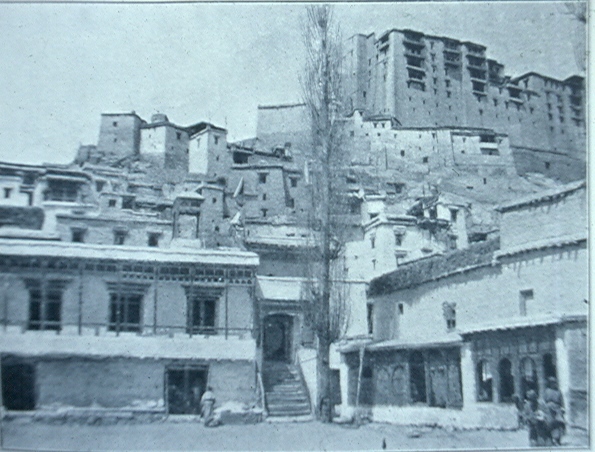Ladakh, often referred to as the “Land of High Passes,” is a region in the northernmost part of the Indian subcontinent. Nestled amidst the majestic Himalayas, Ladakh is renowned for its stunning landscapes, ancient monasteries, and a rich cultural heritage. The history of Ladakh is a fascinating tale of cross-cultural influences, strategic importance, and resilience.

View of Leh Palace and Jama Masjid
Ancient Roots:
The history of Ladakh dates back to ancient times, with evidence of human habitation found in the region as early as the Neolithic period. The early inhabitants were likely of Indo-Aryan and Tibetan descent. Over the centuries, Ladakh became a melting pot of diverse cultures, influenced by the trade routes that passed through the region connecting Central Asia, Tibet, and the Indian subcontinent.
Buddhism and Monastic Legacy:
One of the defining aspects of Ladakh’s history is the influence of Buddhism. In the 2nd century, the region embraced Buddhism, and over time, it became a prominent center for Buddhist learning and culture. The monasteries, such as Thiksey, Hemis, and Diskit, played a crucial role in preserving and spreading Buddhist teachings. The monastic architecture, characterized by intricately painted murals and ancient scriptures, stands as a testament to Ladakh’s spiritual heritage.
Turbulent Periods:
Ladakh’s strategic location made it a hotspot for political and military conflicts. Over the centuries, the region witnessed invasions and power struggles between various Central Asian and Tibetan dynasties. It also became an important trade route for merchants traveling along the Silk Road.
The Kashmir Connection:
In the 19th century, Ladakh came under the rule of the Dogra dynasty of the princely state of Jammu and Kashmir. The region continued to be an integral part of the broader geopolitical landscape in the northern frontier of British India.
Modern Era:
Following India’s independence in 1947, Ladakh became a part of the newly formed union territory of Jammu and Kashmir. Over the years, Ladakh faced challenges related to geopolitical tensions and border disputes. However, the region has remained resilient, and its unique cultural identity and breathtaking landscapes continue to attract travelers and scholars alike.
Union Territory Status:
In a historic move in 2019, the Government of India reorganized the state of Jammu and Kashmir, bifurcating it into two separate union territories – Jammu & Kashmir and Ladakh. Ladakh, with its distinct cultural and geographical features, emerged as a union territory on its own.
Today, Ladakh stands as a testament to the confluence of cultures, a repository of ancient wisdom, and a destination that captivates the hearts of those who venture into its high-altitude landscapes.


